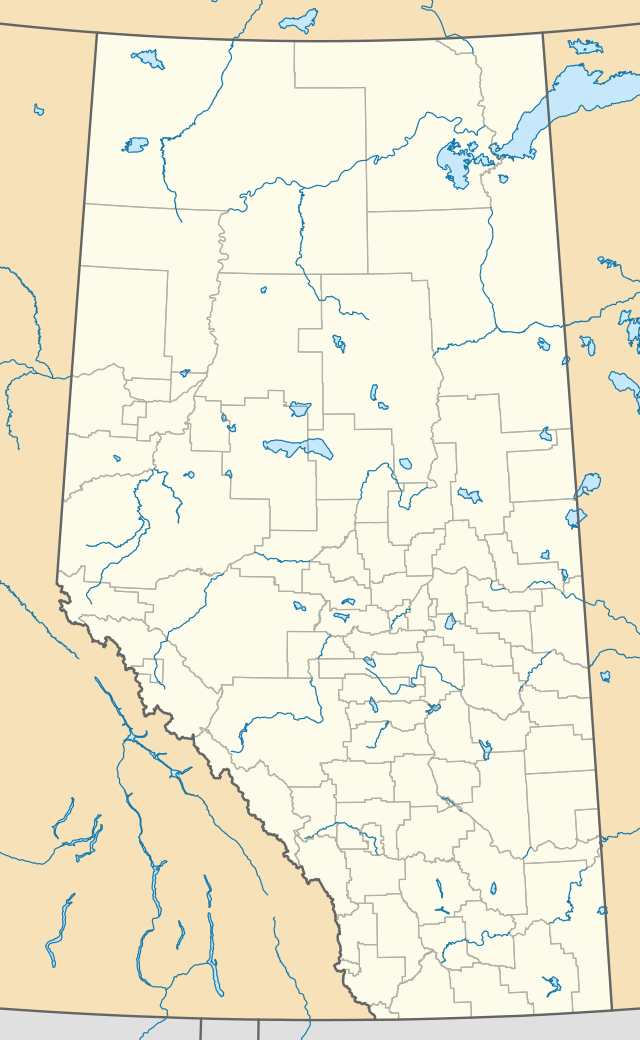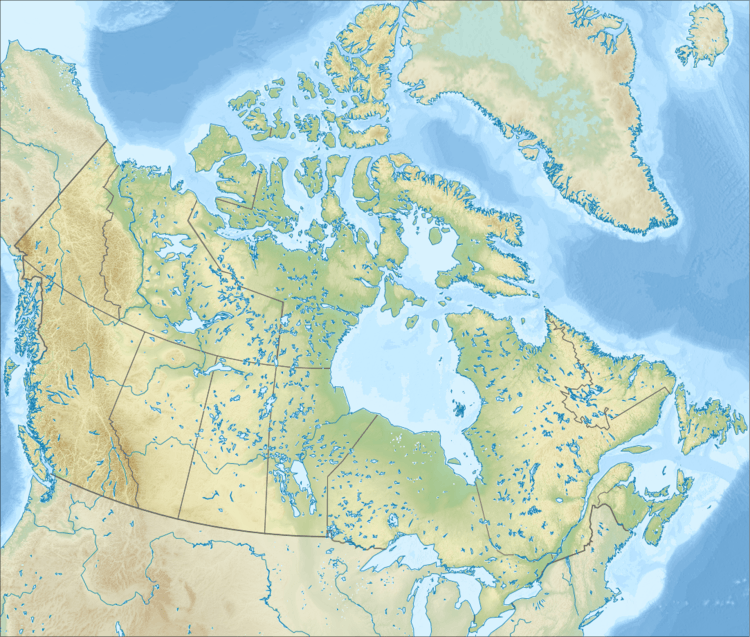Mount Peechee
Mount Peechee is the third highest peak of the Fairholme Range in Banff National Park. Mt. Peechee is located immediately southeast of Mount Girouard in the Bow River valley south of Lake Minnewanka.
| Mount Peechee | |
|---|---|
.jpg) | |
| Highest point | |
| Elevation | 2,935 m (9,629 ft) [1] |
| Prominence | 160 m (520 ft) [2] |
| Listing | List of mountains of Alberta |
| Coordinates | 51°12′35″N 115°22′38″W [3] |
| Geography | |
| Parent range | Fairholme Range |
| Topo map | NTS 82O/03 |
| Climbing | |
| First ascent | 1929[1] |
| Easiest route | rock climb |
The mountain was named in 1884 by George Dawson after an Indian guide who escorted George Simpson through the front ranges of the Canadian Rockies.[1]
Geology
Like other mountains in Banff Park, Mount Peechee is composed of sedimentary rock laid down during the Precambrian to Jurassic periods.[4] Formed in shallow seas, this sedimentary rock was pushed east and over the top of younger rock during the Laramide orogeny.[5]
Climate
Based on the Köppen climate classification, Mount Peechee is located in a subarctic climate with cold, snowy winters, and mild summers.[6] Temperatures can drop below −20 C with wind chill factors below −30 C. Precipitation runoff from Mount Peechee drains into tributaries of the Bow River, which is a tributary of the Saskatchewan River.
See also
References
- "Mt. Peechee". PeakFinder.com. Retrieved 2007-08-31.
- "Mount Peechee". Bivouac.com. Retrieved 2009-01-02.
- "Mount Peechee". Geographical Names Data Base. Natural Resources Canada. Retrieved 2019-08-02.
-
Belyea, Helen (1960). "The Story of the Mountains in Banff National Park" (PDF). Geological Survey of Canada. Archived (PDF) from the original on 2 October 2015. Retrieved 2019-06-23. Cite journal requires
|journal=(help) - Gadd, Ben (2008). "Geology of the Rocky Mountains and Columbias". Cite journal requires
|journal=(help) - Peel, M. C.; Finlayson, B. L. & McMahon, T. A. (2007). "Updated world map of the Köppen−Geiger climate classification". Hydrol. Earth Syst. Sci. 11: 1633–1644. ISSN 1027-5606.
External links
- National Park Service web site: Banff National Park
- Mount Peechee weather: Mountain Forecast

